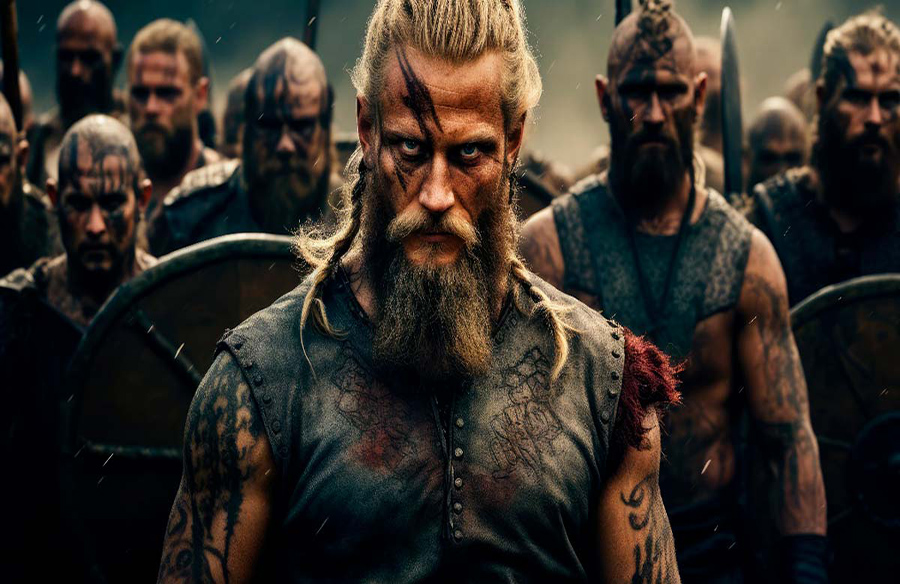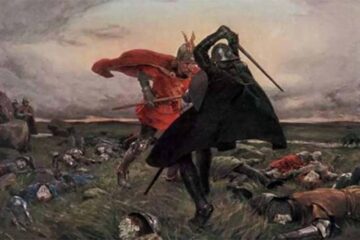Unveiling the Viking Mindset Through Five Notable Deaths

The Viking mindset, deeply ingrained in Old Norse sagas, comes to life through the accounts of five significant Viking deaths. These tales provide a vivid glimpse into the psyche of these fierce warriors, shedding light on their values, beliefs, and outlook on life.
The Raid on Lindisfarne: A Prelude to Viking Depredations
The raid on Lindisfarne in AD 793 stands as the opening chapter in the saga of Viking depredations in Western Europe. This audacious assault set the stage for centuries of Viking raiding and conquest, showcasing their relentless pursuit of wealth, power, and glory.
Ragnar Lodbrok’s Saga: A Tale of Vengeance and Invasion
While Ragnar Lodbrok’s saga may be embellished, it served as a rallying cry for his sons’ vengeance-laden invasion of England in 865. This epic tale exemplifies the Vikings’ thirst for revenge and their willingness to embark on perilous journeys in pursuit of honor and glory.
The Demise of Hrolf-Kraki: Dark Humor and Irony
The demise of Hrolf-Kraki, often hailed as a Danish ‘King Arthur,’ reveals the Vikings’ dark humor and love for irony. In this saga, the seemingly insignificant character Vöggr plays a pivotal role, underscoring the unpredictability of fate and the whims of destiny.
The Defeat of the Jomsvikings: Honor Amidst Tragedy
The Jomsvikings’ defeat at Hjörungavágr, characterized by beheadings and twisted humor, reflects their legendary code of honor. Despite their tragic end, the Jomsvikings epitomize the ideals of bravery, loyalty, and camaraderie that defined Viking society.
King Olaf Haraldsson and Thormod: Embracing Fate and Loyalty
King Olaf Haraldsson’s acceptance of a premonitory death song and Thormod’s symbolic arrow add layers of fate and loyalty to the Viking ethos. These sagas transcend mere accounts of death, offering profound insights into the complexities of the Viking mindset—a blend of vengeance, dark humor, and an acceptance of fate that shaped an era of raiding, exploration, and conquest.














